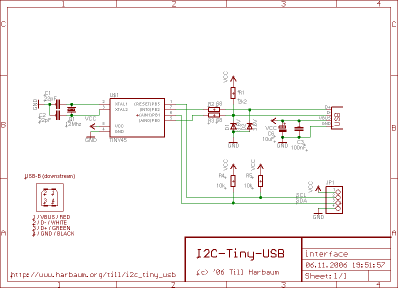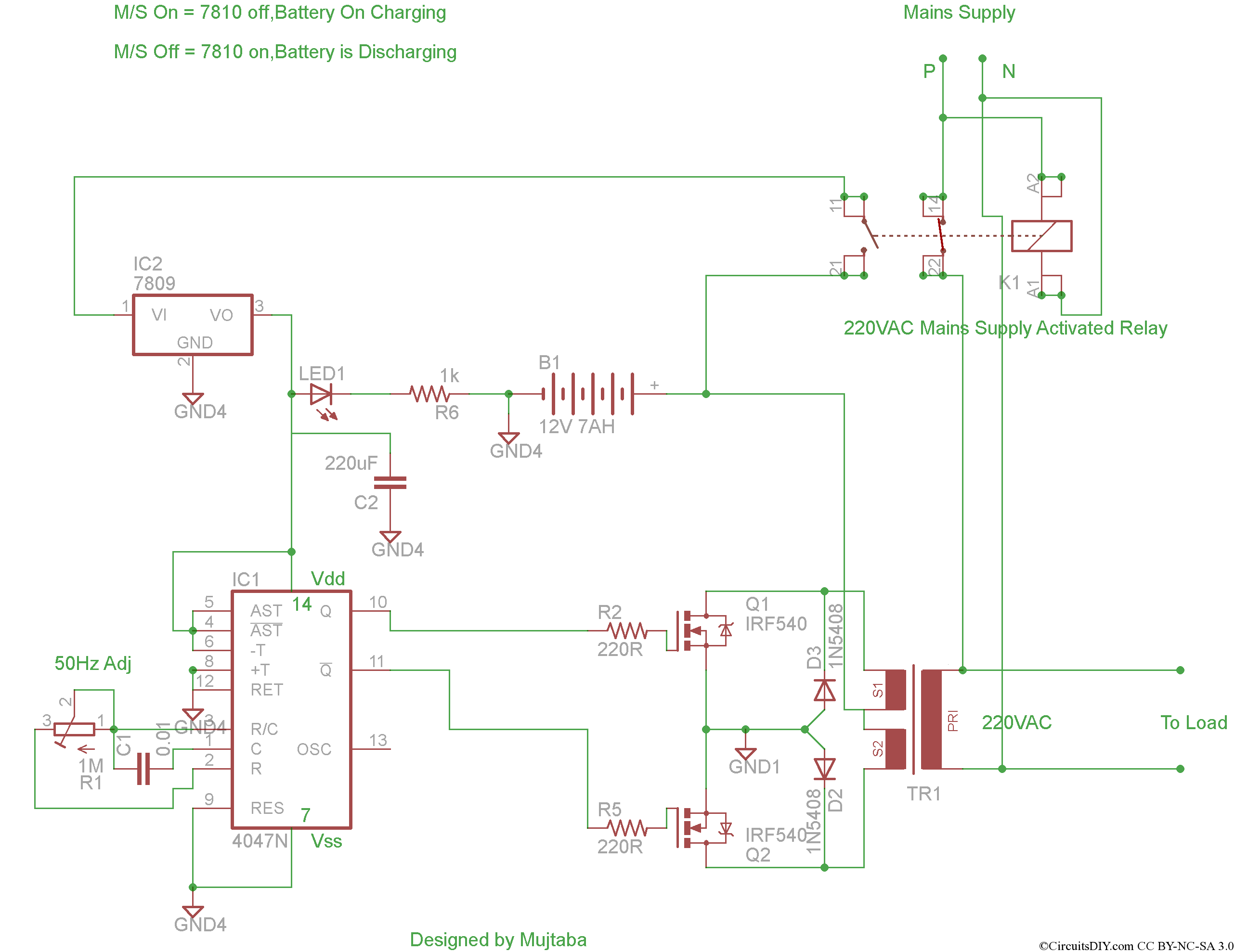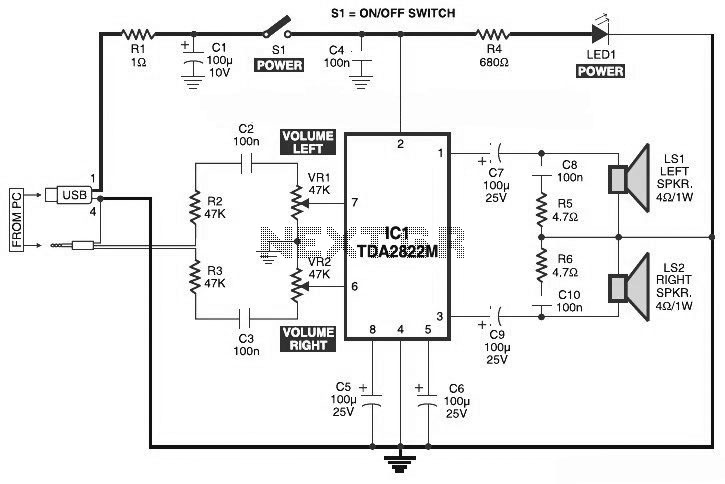
avr project i2c tiny usb

The i2c-tiny-usb project is an open-source and open-hardware initiative. Its objective is to offer an affordable and versatile I2C interface that can be connected to various devices.
The i2c-tiny-usb project serves as a bridge between USB and I2C communication protocols, allowing users to interface with I2C devices using a standard USB port. This project is particularly valuable for developers and hobbyists who require a cost-effective solution for connecting microcontrollers, sensors, and other I2C-compatible peripherals to a computer or other USB host devices.
The architecture of the i2c-tiny-usb interface typically includes a microcontroller that handles the USB communication and translates it to I2C signals. This microcontroller is programmed to interpret commands sent from the USB host and convert them into I2C commands that can be understood by the connected devices. The USB interface allows for easy plug-and-play capabilities, enabling users to quickly establish connections without the need for complex setup procedures.
In addition to its basic functionality, the i2c-tiny-usb project may support various I2C speeds and configurations, accommodating a wide range of I2C devices. This flexibility makes it suitable for numerous applications, including data acquisition, sensor interfacing, and control systems.
Furthermore, being an open-source project, the i2c-tiny-usb allows users to modify and adapt the design according to their specific needs. The availability of schematics, firmware, and documentation encourages collaboration and innovation within the community, fostering advancements in I2C communication techniques.
Overall, the i2c-tiny-usb project exemplifies the principles of open-source hardware by providing an accessible, adaptable, and cost-effective solution for I2C interfacing, thus enabling a broader audience to engage with and explore the capabilities of I2C technology.The i2c-tiny-usb project is an open source/open hardware project. The goal of i2c-tiny-usb is to provide a cheap generic i2c interface to be attached to the.. 🔗 External reference
The i2c-tiny-usb project serves as a bridge between USB and I2C communication protocols, allowing users to interface with I2C devices using a standard USB port. This project is particularly valuable for developers and hobbyists who require a cost-effective solution for connecting microcontrollers, sensors, and other I2C-compatible peripherals to a computer or other USB host devices.
The architecture of the i2c-tiny-usb interface typically includes a microcontroller that handles the USB communication and translates it to I2C signals. This microcontroller is programmed to interpret commands sent from the USB host and convert them into I2C commands that can be understood by the connected devices. The USB interface allows for easy plug-and-play capabilities, enabling users to quickly establish connections without the need for complex setup procedures.
In addition to its basic functionality, the i2c-tiny-usb project may support various I2C speeds and configurations, accommodating a wide range of I2C devices. This flexibility makes it suitable for numerous applications, including data acquisition, sensor interfacing, and control systems.
Furthermore, being an open-source project, the i2c-tiny-usb allows users to modify and adapt the design according to their specific needs. The availability of schematics, firmware, and documentation encourages collaboration and innovation within the community, fostering advancements in I2C communication techniques.
Overall, the i2c-tiny-usb project exemplifies the principles of open-source hardware by providing an accessible, adaptable, and cost-effective solution for I2C interfacing, thus enabling a broader audience to engage with and explore the capabilities of I2C technology.The i2c-tiny-usb project is an open source/open hardware project. The goal of i2c-tiny-usb is to provide a cheap generic i2c interface to be attached to the.. 🔗 External reference
Warning: include(partials/cookie-banner.php): Failed to open stream: Permission denied in /var/www/html/nextgr/view-circuit.php on line 713
Warning: include(): Failed opening 'partials/cookie-banner.php' for inclusion (include_path='.:/usr/share/php') in /var/www/html/nextgr/view-circuit.php on line 713





